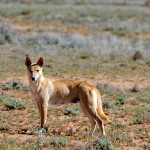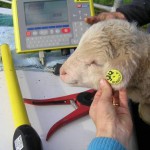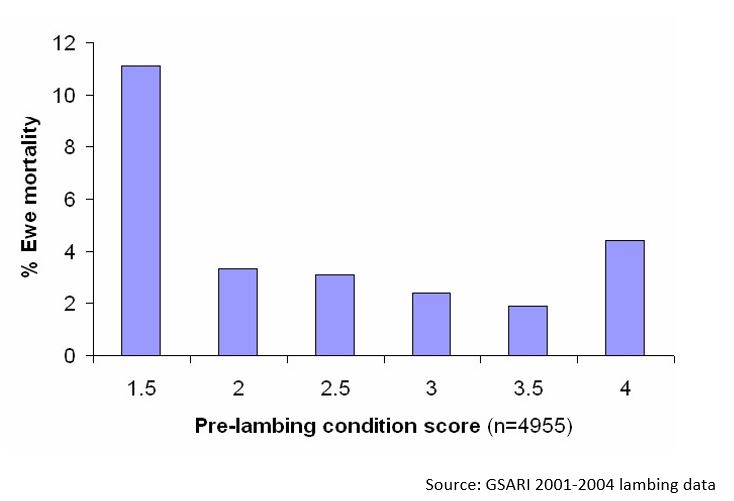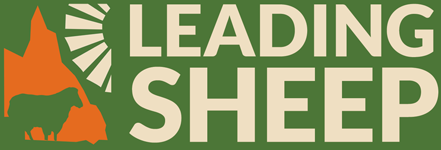- Predator control information
- Is eID for you?
- Ewe mortality is decreased with improved condition
- Upcoming events
- eBulletins
1.  Predator control information
Predator control information
If you haven’t been on the Leading Sheep website recently it might be time to check it out as there are a range of resources on there covering a number of topics. Below is a list of just some of the predator control resources on this site – visit www.leadingsheep.com.au to have a look.
Electric fencing:
- Series of short webinars (each episode 4-7 mins long) featuring both an electric fencing rep as well as practical experiences from a producer – http://bit.ly/2d5SCmp
- Case study of a producer in central western Qld – http://bit.ly/2cMGcAA
- Case study of a producer with properties in southern and central west Qld – http://bit.ly/2cqdt3k
Exclusion fencing:
- Fact sheet with tips and fence specifications from four producers in south west Qld – http://bit.ly/2d370Jt
- Three exclusion fencing case studies form producers in south west Qld – http://bit.ly/2cMEHm9 and http://bit.ly/2db1mUz
Guard animals – maremmas, donkeys and alpacas:
- An article on the use of Maremmas on a property in south west Qld – http://bit.ly/2cvnRFf
- A recorded webinar on the use of maremmas as guard animals – http://bit.ly/2cnDMCa
- Fact sheet with producer experiences about using donkeys – http://bit.ly/2daZMCb
- A recorded webinar on the use of donkeys as guard animals- http://bit.ly/2d1ygts
- A recorded webinar on the use of alpacas as guard animals – http://bit.ly/2d36Stx
Feral pigs:
- Recorded webinar on controlling feral pigs – http://bit.ly/2dlhhD7
Trapping:
- List of wild dog trappers who are available in Qld – http://bit.ly/2cEFDU5
 2. Is eID for you?
2. Is eID for you?
There are many financial and practical factors to consider before investing in on-farm electronic identification (eID) technology. An article that was originally published in Meat and Livestock Australia’s Feedback magazine discusses some of the benefits of eID, as well as what questions you need to ask to identify the best set up for your business. It also contains a producer case study and links to more resources.
Click here to view the article.
3. Ewe mortality is decreased with improved condition
Source – http://www.lifetimewool.com.au
Ewe condition score at lambing can be important in limiting ewe mortality, especially when weather conditions are poor. Mortality occurs mainly when condition score is less than 2 during late pregnancy, see graph below. Twin bearing ewes are more at risk during late pregnancy and lambing. At the other end of the scale, single bearing ewes may have increased risk of dystocia if their condition score is too high coming into lambing.
Ewes are also affected by weather, their age, pregnancy status and food on offer at lambing.

Recommendations
- Twinners should be at least condition score 3 and on the best pasture available to allow unrestricted intake by lambing to limit pregnancy toxaemia.
- Single ewes should be at least condition score 2.5 by lambing and should be less than condition score 4 to limit dystocia
Danger Zone
- Twin ewes < CS 2.5 @ lambing
- Single ewes <CS 2 or >CS 4 @ lambing
Options:
- Identify twinners (with option to run separately in late pregnancy) and remove dries at scanning
- Draft off any twinners less than condition score 2.5 at scanning and manage separately to increase condition score
- Draft off any single ewes less than condition score 2 at scanning and manage separately to increase condition score
- Prepare lambing paddocks – especially for the twinning mob by:
- controlling predators
- providing shelter (if needed)
- ensuring good quality and supply of pasture
Any ewes less than condition score 2 should be removed from the mob and managed separately.
5. Upcoming events
17 November, ‘Wetlands’ Augathella – Farm Biodiversity field day. For more information contact SWNRM 0746 568 500 or office@swnrm.org.au.
17-18 November, Roma – Young beef producers forum. For more information click here.
22 November, Bollon and 24 November Quilpie – Grazing BMP workshops. To register or to find out more information contact Darren Jennings on 0428 220 136 or darren.jennings@swnrm.org.au
29 November, Charleville and 2 December, Thargomindah – NRM Spatial Hub Training. To register or to find out more information contact Darren Jennings on 0428 220 136 or darren.jennings@swnrm.org.au
5 December, Clifton – Pest Animal Management and Chemical Accreditation Workshops. For more information or to register click here.
6 December, Warwick – Pest Animal Management and Chemical Accreditation Workshops. For more information or to register click here.
6. eBulletins
Woolgrowers enewsletter October 2016
Invasive Animals CRC Feral Flyer – 3 November 2016
ParaBoss News October 2016 – State Outlooks
LBN Biosecurity News – November 2016
